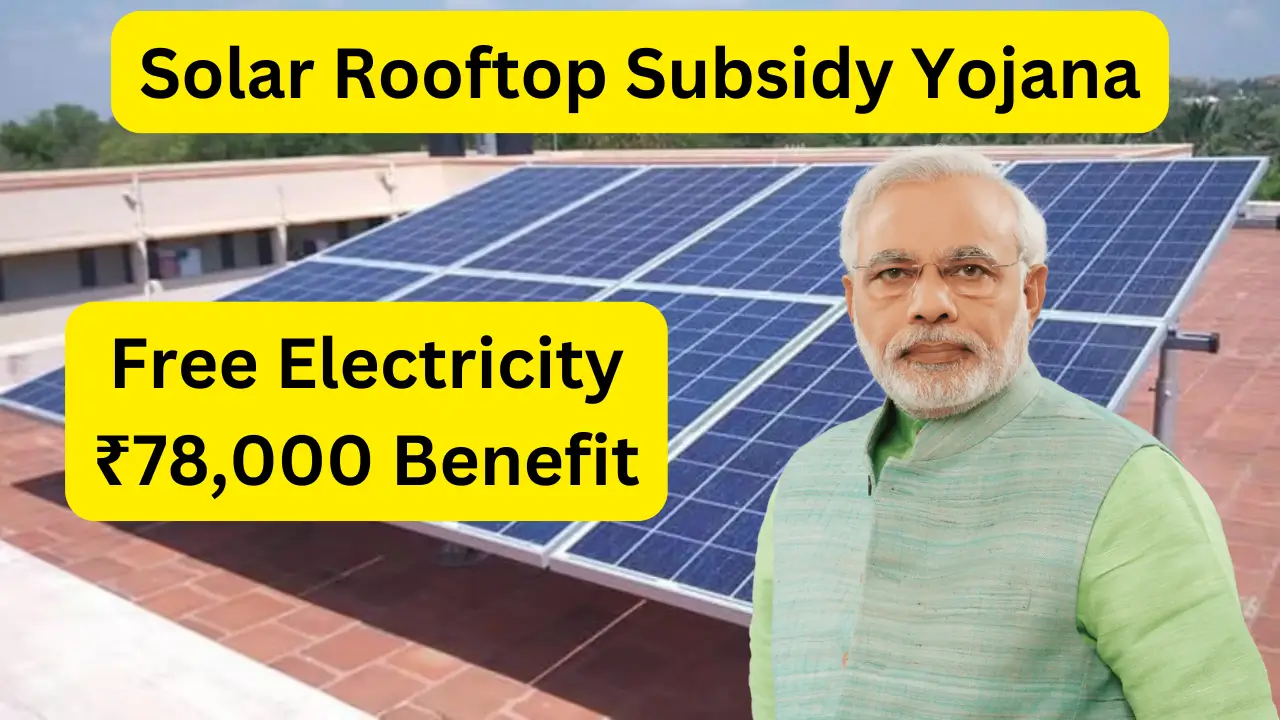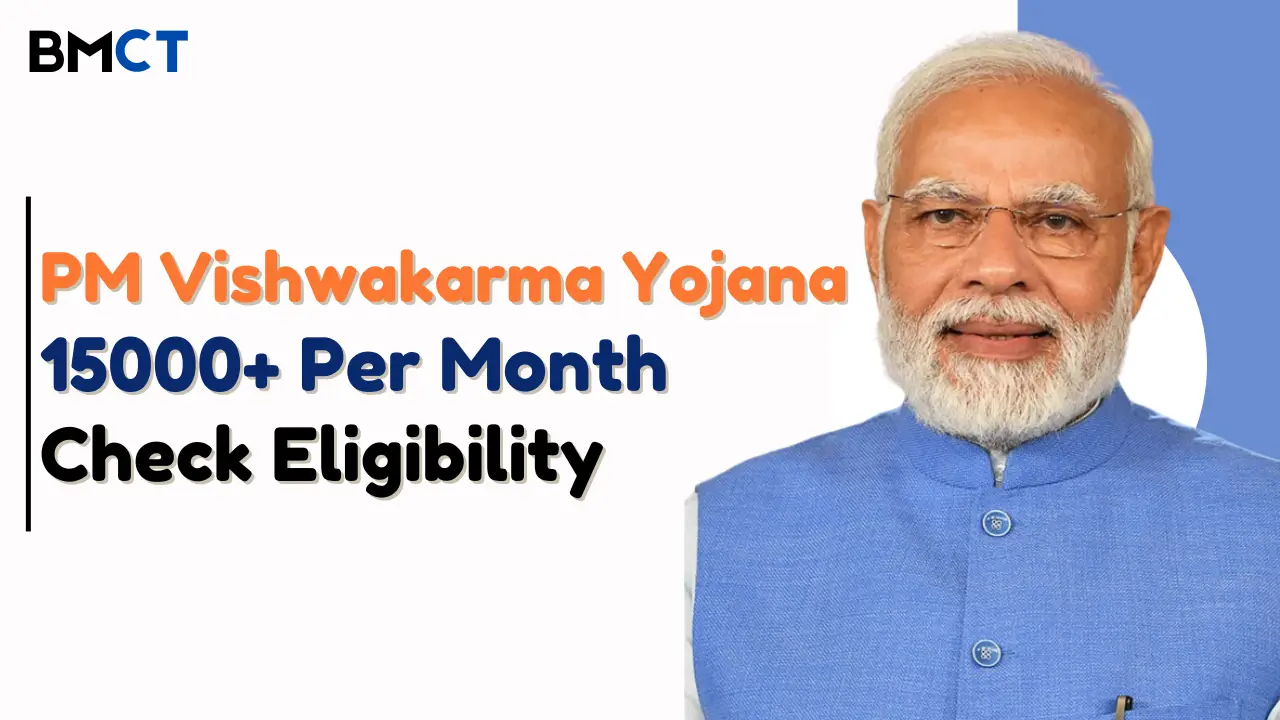The Solar Rooftop Subsidy Yojana, also known as PM Surya Ghar Muft Bijli Yojana, is a groundbreaking initiative by the Indian government to promote the adoption of solar energy in residential areas. Launched on February 15, 2024, this scheme aims to install rooftop solar panels in one crore households across the country by 2027. With a substantial outlay of Rs. 75,021 crore, the program seeks to reduce electricity costs for poor and middle-class families while contributing to India’s renewable energy goals.
The scheme has already garnered significant attention, with over 1.28 crore registrations and 14 lakh applications received within a short period. As of October 2024, approximately 4 lakh rooftop solar connections have been installed under the PM Suryaghar Yojana, adding around 1.8 GW of new residential rooftop solar capacity. This represents more than half of India’s total residential rooftop solar capacity, achieved in just six months.
The rapid adoption of solar energy through this scheme is expected to help India reach its target of 40 GW of rooftop solar capacity and generate over 1,000 billion units of electricity over the 25-year lifetime of the installed systems.
Contents
- 1 The Solar Rooftop Subsidy Yojana
- 1.1 The Solar Rooftop Subsidy Yojana Objectives
- 1.2 Eligibility Criteria For The Solar Rooftop Subsidy Yojana
- 1.3 The Solar Rooftop Subsidy Yojana Structure
- 1.4 Application Process
- 1.5 Required Documents
- 1.6 Benefits of The Solar Rooftop Subsidy Yojana
- 1.7 Impact and Future Outlook
- 1.8 The Solar Rooftop Subsidy Yojana Challenges and Solutions
- 2 Conclusion
The Solar Rooftop Subsidy Yojana

| Scheme Name | Solar Rooftop Subsidy Yojana (PM Surya Ghar Muft Bijli Yojana) |
| Launch Date | February 15, 2024 |
| Target | 1 crore households by 2027 |
| Budget Outlay | Rs. 75,021 crore |
| Subsidy Amount | Rs. 30,000 to Rs. 78,000 per household |
| Electricity Benefit | Up to 300 units of free electricity per month |
| Implementation Period | Till FY 2026-27 |
| Implementing Agencies | National Programme Implementation Agency (NPIA) and State Implementation Agencies (SIAs) |
The Solar Rooftop Subsidy Yojana Objectives
- Increase Solar Capacity: Add 30 GW of solar capacity in the residential sector.
- Reduce Carbon Emissions: Cut down 720 million tonnes of CO2 over the lifetime of the installed rooftop systems.
- Economic Empowerment: Help households save on electricity bills and earn extra income by selling surplus power.
- Job Creation: Generate 17 lakh direct jobs in manufacturing, logistics, installation, and operations.
- Energy Independence: Reduce dependency on the grid and promote self-reliance in energy production.
- Awareness: Increase public awareness about solar energy and its benefits.
Eligibility Criteria For The Solar Rooftop Subsidy Yojana
- Citizenship: Must be an Indian citizen.
- Property Ownership: Own a house with a suitable roof for solar panel installation.
- Electricity Connection: Have a valid electricity connection.
- No Prior Subsidy: Should not have availed any other subsidy for solar panels.
The Solar Rooftop Subsidy Yojana Structure
- Up to 2 kW: 60% of the solar unit cost
- 2 kW to 3 kW: Additional 40% subsidy on the system cost
- Maximum Subsidy: Capped at Rs. 78,000 for systems of 3 kW or higher
Based on current benchmark prices, the subsidy amounts to:
- 1 kW system: Rs. 30,000
- 2 kW system: Rs. 60,000
- 3 kW system or higher: Rs. 78,000
Application Process
- Registration: Visit the official website (pmsuryaghar.gov.in) and register by selecting your state and electricity distribution company.
- Information Review: Use the portal to access information about appropriate system sizes and benefits.
- Vendor Selection: Choose a registered vendor and solar panel make.
- Application Submission: Submit your application through the portal.
- Feasibility Approval: Wait for DISCOM to approve the feasibility of installation.
- Installation: Once approved, install the solar plant through the registered vendor.
- Net Meter Application: Apply for a net meter after installation.
- Commissioning: DISCOM will inspect and generate a commissioning certificate.
- Subsidy Disbursement: Submit bank details to receive the subsidy within 30 days.
Required Documents
- Aadhar card
- Address proof
- Identification card
- Family ration card
- Income certificate
- Bank passbook
- Mobile number
- Passport size photo
- Energy bill
Benefits of The Solar Rooftop Subsidy Yojana
- Cost Savings: Households can save Rs. 15,000 to Rs. 18,000 annually on electricity bills.
- Income Generation: Excess electricity can be sold back to the grid, providing additional income.
- Energy Independence: Reduced reliance on the traditional power grid.
- Environmental Impact: Significant reduction in carbon emissions.
- Job Creation: Boost in employment opportunities in the solar sector.
- Technological Advancement: Promotion of clean energy technology adoption.
- Grid Support: Reduced strain on the national power grid during peak hours.
Impact and Future Outlook
- Capacity Addition: Targeting 30 GW of rooftop solar capacity by 2027.
- Electricity Generation: Expected to generate over 1,000 billion units of electricity over 25 years.
- Employment: Creation of 17 lakh direct jobs in the solar sector.
- Emission Reduction: Projected to reduce 720 million tons of CO2 emissions.
The Solar Rooftop Subsidy Yojana Challenges and Solutions
- Awareness: Many households are still unaware of the benefits of solar energy.
Solution: Increased public outreach and education programs. - Initial Costs: The upfront cost of installation can be high for some families.
Solution: Easy EMI options and partnerships with financial institutions. - Technical Expertise: Lack of skilled technicians for installation and maintenance.
Solution: Training programs and certification courses for solar technicians. - Grid Integration: Ensuring smooth integration of rooftop solar with the existing grid.
Solution: Upgrading grid infrastructure and implementing smart grid technologies.
Conclusion
The Solar Rooftop Subsidy Yojana represents a significant step towards India’s clean energy future. By empowering households to generate their own electricity, the scheme not only reduces the financial burden on families but also contributes to the nation’s renewable energy goals. With its comprehensive approach to subsidies, implementation, and support, the program has the potential to revolutionize India’s energy sector and set an example for sustainable development worldwide.
As the scheme progresses, it will be crucial to address challenges, maintain momentum, and continue to innovate in the solar energy space. The success of the Solar Rooftop Subsidy Yojana will play a vital role in India’s journey towards energy self-reliance and environmental sustainability, paving the way for a brighter, cleaner future for generations to come.

